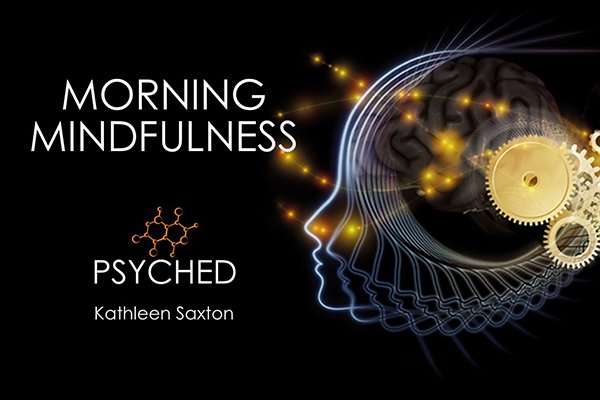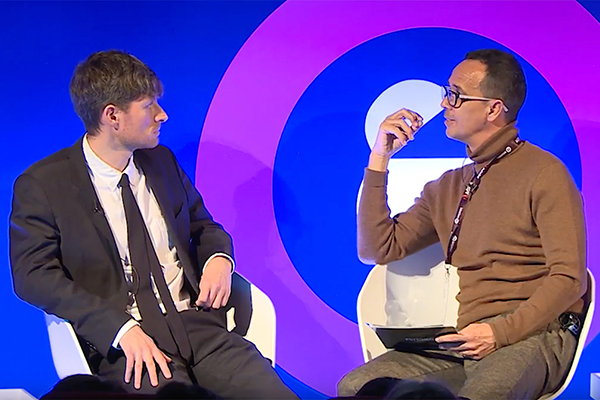Ever wondered why it took you so long to leave the narcissist in your life behind? A trauma bond could be part of the reason, according to psychotherapist Kathleen Saxton. Here, she explains why this happens and how to break the toxic bond.
Imagine you’ve been dating your partner for three months or even a year. It all starts beautifully: romantic dates, regular texts and calls – you have so much in common. They tell you they’ve never fallen so deeply in love before, so you meet the family and find yourselves spending increasing amounts of time together. Before too long, there are discussions around moving in together, maybe even marriage. The idea that they might be the long-term partner you’ve been seeking feels like a real possibility. You are flooded with the feel-good chemical dopamine and the bonding hormone oxytocin, and life feels wonderful.
A few months pass and your partner’s behaviour starts to slide. Positive affection is swiftly replaced, without explanation or incident, by a confusing cocktail of devaluation, coldness and even abandonment. Cosy date nights, long calls and electrifying sex turn into functional mid-week lunches, awkward conversations. Even the sex has started to feel robotic. You raise your concerns with your partner, who dismisses you, suggesting you’re imagining these problems. Confusion and sadness surround you, prompting the release of adrenaline and the stress hormone cortisol. You consider ending the relationship but, within days, your partner’s affection returns. A magical night out, a romantic weekend, a love note describing your idyllic future together – and with it you notice instant relief in your body, the painful emotional longing satiated and hope for the future returns. Your partner is back and so is the dopamine, but silently a trauma bond is forming.
The theory of trauma bonding was first introduced into the world of psychotherapy by Dr Patrick Carnes in 1997 to describe the unique relationship that develops between the abuser and the abused when emotional and psychological manipulation is at the core. In this dynamic, the initial honeymoon is often replaced by recurring and growing abuse, interspersed with moments of kindness or affection, creating a confusing and imbalanced power dynamic and a growing psychological dependency in the victim.
“You’re hooked on the fantasy they initially promised”
Unsurprisingly, it’s often prevalent in the accounts we hear from people in relationships with those with narcissistic personality disorder (NPD) – a diagnosable mental health condition that’s thought to be lurking within between 0.5% and 5% of the population. As research into NPD grows, psychotherapists like myself have become more adept at spotting the signs and understanding how someone with this disorder functions in relationships. Initially, these personalities present a ‘false’ self – one they have learnt is an ‘ideal’ presentation to lure you in (ie kind, caring, charming); typically, they also can maintain this persona with an audience, but can’t sustain this false persona in private, at least not long term. Eventually, their true narcissistic personality and associated behaviours emerge, often including unexplained coldness, intentional disregard for you and the relationship, emotional neglect, lack of empathy, a victim mentality and an obsession with how they are perceived both intellectually and physically. But by then, you’re hooked on the fantasy they initially promised – that safe, forever love with the roses around the door.
I worked with a client last year whose narcissistic fiancee had increasingly and consistently emotionally abused her to the point that after five years, his almost complete ownership of the power dynamic meant he had rationed the relationship to just three hours together a week, all the while continually promising that they’d buy a house together yet forcing her to spend most days, including Christmases and birthdays, alone. Her self-esteem had become so fractured by his manipulative oscillation that she accepted his breadcrumbs rather than lose him completely, and she painfully recounted him sneering at her when she cried with loneliness as he walked out on Christmas Eve. Her heightened feelings of addiction to the rare return of him (and with it, the oxytocin) meant her desperation and embarrassment had exhausted those who genuinely loved her, and she had even considered suicide as her only way to break the painful cycle of addiction and withdrawal. Thankfully, she found therapy and, eventually, after several attempts to break the trauma bond and extensive support from her friends, she managed to escape the relationship for good.
A trauma bond, such as the one that had developed between my client and her partner, is a core reason why it is so hard for a victim to leave a relationship, particularly with a narcissist who is skilled at manipulation. In Dr Carnes’s book The Betrayal Bond: Breaking Free Of Exploitative Relationships, he discusses trauma bonding to be addictive in nature, drawing parallels between the psychological mechanisms underlying trauma bonding and those of substance addiction. Further studies in 2006 by Dr Martin Teicher, have shown that victims experience similar neurological responses to both positive and negative stimuli from their
drug (in this case, their abusive partner), triggering a cycle of craving, reward and withdrawal similar to that seen in narcotic addiction.
Studies by Dr Neil Jacobson and Dr John Gottman further highlighted that giving up that ‘drug’ (in this case the partner we once so desired), can take an average of seven attempts and, in the meantime, the trauma bond continues to develop, having a profound effect on an individual’s mental and physical health. It reinforces feelings of helplessness, worthlessness and low self-esteem, leading to a distorted sense of reality where the victim may believe that the abuse is deserved or that they are incapable of finding happiness outside of the abusive relationship.
Similar to the sunk cost fallacy, where a person is reluctant to abandon a strategy or plan, even though it is failing, due to the significant ‘investment’ they have already made, hope is an unhelpful element in these specific relationships. It’s this hope the victim clings to as their life deteriorates, despite the growing concern of friends and family who likely no longer support the union. As a result, they might start to hide the now serious level of abuse and neglect, and the feelings of shame this causes will only isolate them further.
Breaking a trauma bond, or supporting someone who needs to, will be one of the most challenging experiences in your lifetime. It is, however, possible and here are some critical elements to consider.
Recognise the patterns
Properly acknowledging that you are in a toxic relationship with a narcissist – characterised by intermittent abuse and affection – is the first step to walking away. The devastating truth that the person you initially met does not actually exist, and the person you now remain with will not change, can be a hard truth to come to terms with. Privately documenting and dating abusive incidents and episodes can start to reveal to you just how chronic the frequency has become. Equally, growing your awareness of the cyclical and predictable pattern the abuse takes – the temporary kindness and future faking that is swiftly replaced by discarding, devaluing, neglecting, ridiculing and abandoning you – means you begin to understand how your dependency has been fostered and find validation, albeit painfully, as the cycle now identically plays out each time.
Learn more
It will be really helpful to learn more about narcissistic personality disorder and its connection to trauma bonding to understand the dynamics at play. I recommend Dr Ramani Durvasula’s latest book It’s Not You and her long-running podcast Navigating Narcissism to help identify and validate your experiences, as will psychotherapist Helen Villiers’s content, which you can find across a range of social media. There is a lot of noise around this space at the moment, so ensure you are discerning in the qualifications and experiences of those you choose to follow.
Self-care is critical
Invest time and energy into reconnecting with who you were before you met the abuser – loss of self is a common trait in victims who have ensured sustained abuse at the mercy of these individuals. Connect with the people who care for you and get your basics in place as you find the strength to successfully leave. By basics, I mean things as fundamental as sleep, nutrition, educated supporters and activities that promote self-love and self-esteem.
Consider seeking specialist therapy
It’s important to work through the trauma and develop coping strategies for dealing with the aftermath and withdrawal. This will help you gain valuable insights as to what drew you and kept you there, and will strengthen your resolve to never return again. Breaking free from a trauma bond for good is a journey that requires courage, resilience and support. By recognising the signs, accepting this perfect person was just a false persona (as a part-symptom of their NPD) and seeking specialist help means you can finally prioritise your own wellbeing and reclaim your life, building healthy, fulfilling relationships based on mutual respect and trust.
It is no life to live in the constant cycle of psychological abuse. Their love never existed, but yours does, and you will find someone more worthy to offer it to. For now, though, let that be you.
Stylist, May 2024








